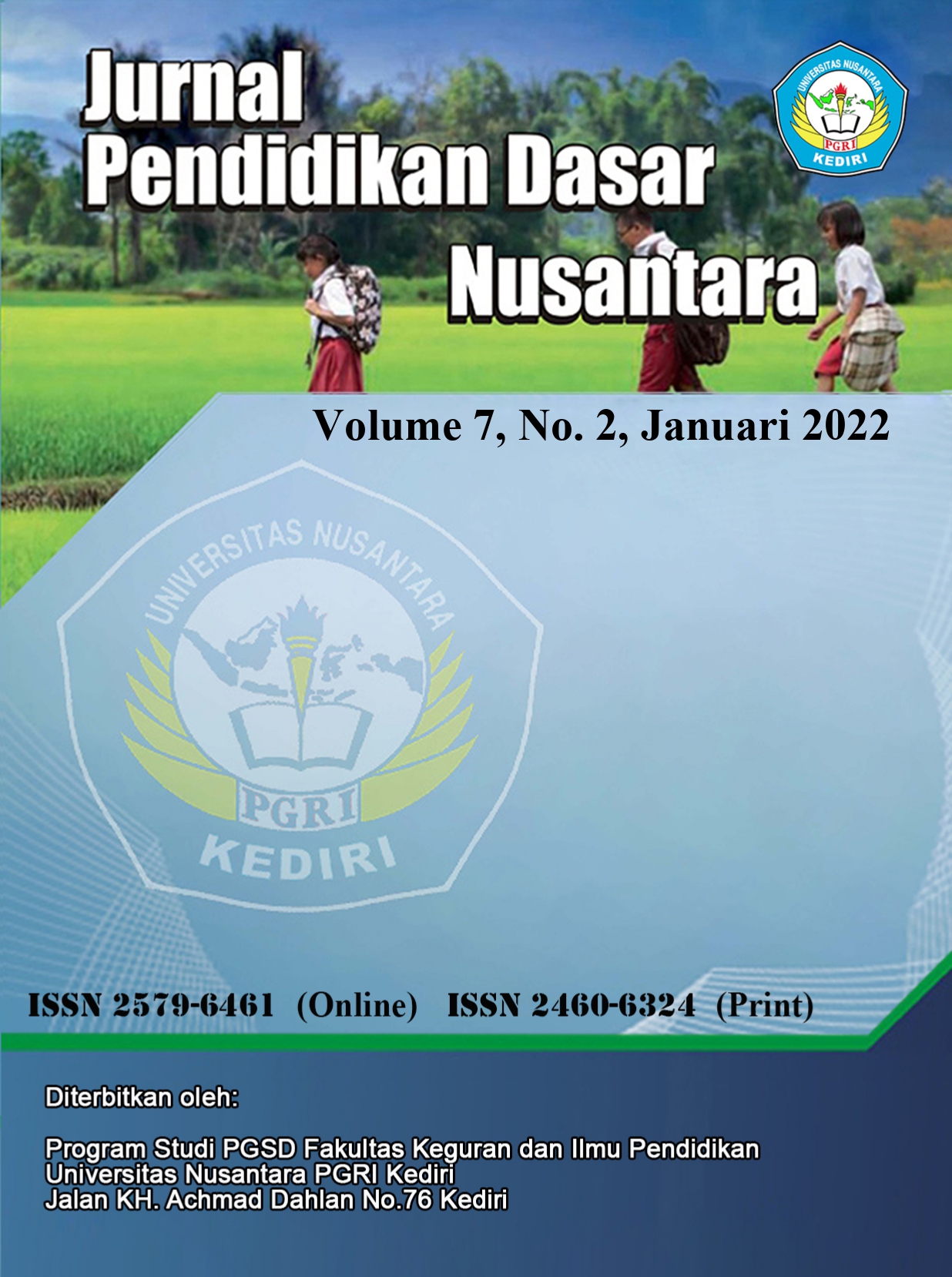Creative thinking with stem-based project-based learning model in elementary mathematics learning
DOI:
https://doi.org/10.29407/jpdn.v7i2.17002Keywords:
Project-Based Learning, STEM, Creative Thinking, Elementary MathematicsAbstract
Entering the era of Industrial Revolution 5.0, changes occurred in all aspects, including education. One of the important competencies in this era is the ability to think creatively. In addition, students are also required to be able to integrate their knowledge with science, technology, engineering, and mathematics (STEM). This research is a quasi-experimental research with a non-equivalent post-test only control group design which aims to determine whether is there an effect of using the Project-Based Learning model with STEM-based approach on the creative thinking skills of elementary school students in class V mathematics. The population in This research is the fifth-grade students of SDN 225 Palembang. As for the research sample for the experimental class, students of class V-A and the control class, students in class V-B. The experimental class was treated with Project-Based Learning based on STEM, while the control class used the Project-Based Learning model only. Data collection techniques using tests and data analysis with t-test. Based on the analysis of research data with a significant value of 0.006 < 0.05, it can be concluded that there is an effect of students' creative thinking skills using the STEM-based Project-Based Learning learning model in Mathematics Learning for fifth-grade elementary school.
Downloads
References
Aldabbus, S. 2018. Project-based learning: Implementation & challenges. International Journal of Education, Learning and Development, 6(3), 71-79.
Association of American Universities. 2013. Framework for systemic change in undergraduate STEM teaching and learning. Diambil dari https://www.aau.edu/sites/default/files/STEM%20Scholarship/AAU_Framework.pdf
Carlisle, D.L., & Weaver, G.C. 2018. STEM education centers: catalyzing the improvement of undergraduate STEM education. International Journal of STEM Ed 5(47), 1-21
Capraro, M. M., Whitfield, J. G., Etchells, M. J., Robert M., & Capraro. (2016). A companion to interdisciplinary STEM project-based learning: For educators by educators (second edition). Rotterdam: Sense Publishers.
Chesky, N. Z. & Wolfmeyer, M. R. 2015. Philosophy of STEM education: A critical investigation. New York: Palgrave Macmillan.
Chiang, C. L., & Lee, H. 2016. The effect of project-based learning on learning motivation and problem-solving ability of vocational high school students. International Journal of Information and Education Technology, 6(9), 709-712.
Hidayat, W. & Veny Triyana Andika Sari. 2019. Kemampuan berpikir kritis matematis dan adversity quotient siswa SMP. Jurnal Elemen, 5(2), 242–252.
Kristanti, Y. D., Subiki, & Handayani, R. D. 2016. Model pembelajaran berbasis proyek (project-based learning model) pada pembelajaran fisika di SMA. Jurnal Pembelajaran Fisika, 5(2), 122-128.
Margot, K. C., & Kettler, T. 2019. Teachers’ perception of STEM integration and education: A systematic literature review. International Journal of STEM Education, 6(2).
Mawardhiyah, K., & Manoy, J. T. 2018. Literasi matematika siswa SMP dalam menyelesaikan soal PISA berdasarkan adversity quotient. MATHEdunesa, 7(3), 638–643.
Nafiah, Y. N., & Suyanto, W. 2014. Penerapan model problem-based learning untuk meningkatkan keterampilan berpikir kritis dan hasil belajar siswa. Jurnal Pendidikan Vokasi, 4(1), 125-143.
Nadelson, L. S., Callahan, J., Pyke, P., Hay, A., Dance, M., & Pfiester, J. 2013. Teacher STEM perception and preparation: Inquiry-based STEM professional development for elementary teachers. The Journal of Educational Research, 106(2), 157–168.
Nilasari, N. T. & Anggreini, D. 2019. Kemampuan literasi matematika siswa dalam menyelesaikan soal PISA ditinjau dari adversity quotient. Jurnal Elemen, 5(2), 206-219.
Nurfadhilah & Zubaidah Amir MZ. 2018. Kemampuan penalaran matematis melalui pembelajaran contextual teaching and learning (CTL) pada siswa SMP. Jurnal Elemen, 4(2), 171-182.
Redkar, S. 2012. Teaching advanced vehicle dynamics using a project-based learning (PBL) approach. Journal of STEM Education: Innovations and Research, 13(3), 17-29.
Sudiarta, I. G. P., & Widana, I. W. 2019. Increasing mathematical proficiency and studentscharacter: Lesson from the implementation of blended learning in junior high school in Bali. IOP Conf. Series: Journal of Physics: Conf. Series1317 (2019) 012118.
Swandewi, N.L.P., Gita, I.N., & Suarsana, I.M. 2019. Pengaruh model quantum learning berbasis masalah kontekstual terhadap kemampuan berpikir kreatif siswa SMA. Jurnal Elemen, 5(1), 31-42.
Wahyu, R. 2016. Implementasi model project-based learning (PJBL) ditinjau dari penerapan Kurikulum 2013. Teknoscienza, 1(1), 50-62.
Widana, I. W. 2020. The effect of digital literacy on the ability of teachers to develop HOTSbased assessment. Journal of Physics: Conference Series 1503(2020) 012045.
Zhou, A., Kolmos, A., Nielsen, & Frederik, D. 2012. A problem and project-based learning (PBL) approach to motivate group creativity in engineering education. International Journal of Engineering Education, 28(1), 3-16.
Downloads
Published
Issue
Section
License
Authors who publish with this journal agree to the following terms:
- Copyright on any article is retained by the author(s).
- The author grants the journal, the right of first publication with the work simultaneously licensed under a Creative Commons Attribution License that allows others to share the work with an acknowledgment of the work’s authorship and initial publication in this journal.
- Authors are able to enter into separate, additional contractual arrangements for the non-exclusive distribution of the journal’s published version of the work (e.g., post it to an institutional repository or publish it in a book), with an acknowledgment of its initial publication in this journal.
- Authors are permitted and encouraged to post their work online (e.g., in institutional repositories or on their website) prior to and during the submission process, as it can lead to productive exchanges, as well as earlier and greater citation of published work.
- The article and any associated published material is distributed under the Creative Commons Attribution-ShareAlike 4.0 International License
































